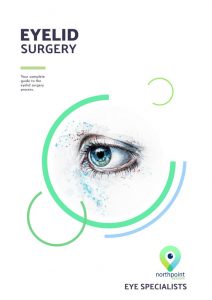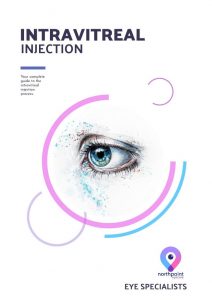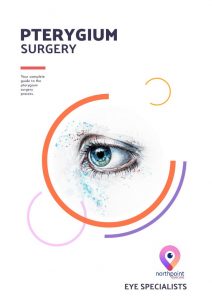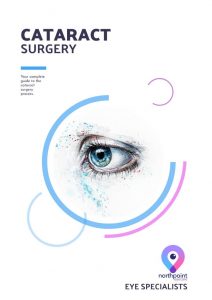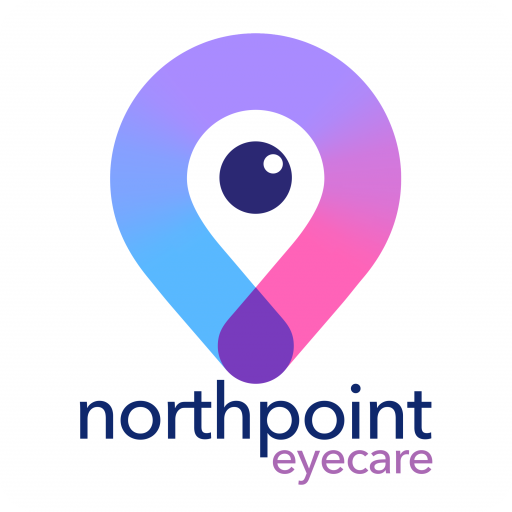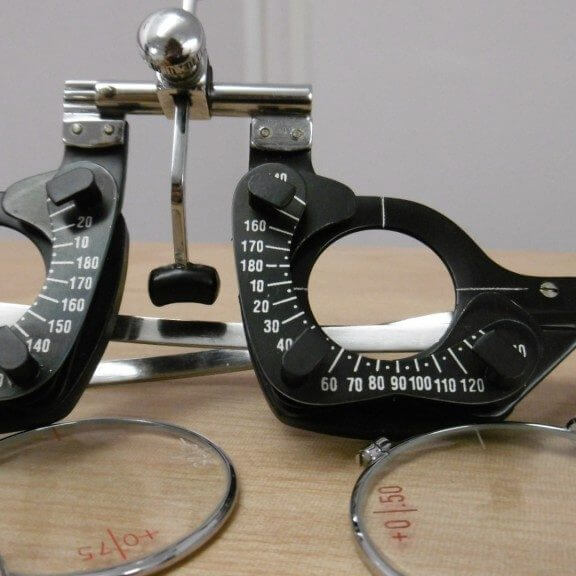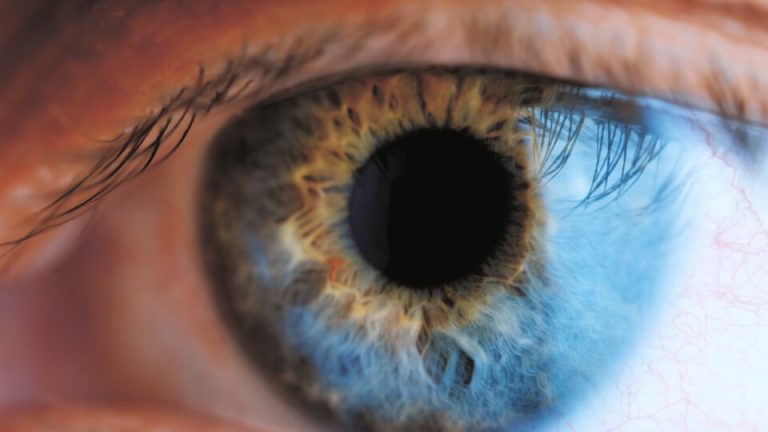Eyelids
Blepharitis
What is Blepharitis?
Blepharitis is a broad term meaning inflammation of the eyelids. There are many causes of this inflammation. Symptoms of this include redness, irritation, foreign body sensation, crusted eyelashes and sore eyes or eyelids. Blepharitis is associated with a poor tear film or dry eye.
How common is Blepharitis?
It is an extremely common condition and most people will have some form of blepharitis during their lifetime. It can occur at any age, however, it is more common over the age of 30. It is commonly associated with Acne Rosacea, Eczema and dry skin.
What are the types of Blepharitis?
Blepharitis is traditionally classified into two main forms, anterior blepharitis and posterior blepharitis. However, this classification is fairly arbitrary as most people have a combination of both types.
In anterior blepharitis, there is involvement of the front of the eyelids particularly the eyelashes and the skin. There can be collection of debris on the eyelashes and inflammation in the eyelash follicles. This can be associated with overgrowth of a naturally occurring skin mite, called Demodex.
Posterior blepharitis is more accurately termed Meibomian Gland Dysfunction (MGD). The meibomian glands are a series of vertical glands in the upper and lower eyelids. These glands produce an oily component of your tears. Dysfunction of these glands leads to sluggish secretion, which can lead to dry eye. Sluggish secretion also leads to a build up of skin bacteria and subsequent inflammation surrounding these gland. This can cause redness and irritation, thickening of the eyelids, chalazion formation and rarely an inflammation in the cornea called Marginal Keratitis. Chronic inflammation in these glands can cause a contraction of the lid margin, which draws in the eyelashes. This is called Marginal Entropion and is the commonest cause of Trichiasis, a condition where the lashes touch the cornea. This can cause significant irritation and lead to ulceration and scarring.
What is the treatment for Blepharitis?
Aims of treatment:
- Reduce inflammation in the lids
- Remove debris from the lashes
- Encourage meibomian gland secretion
- Treat associated poor tear film
In most cases Blepharitis can only be controlled and not cured. Treatment is aimed at reducing inflammation in the lids, removal of debris from around the lashes and encouraging secretion from the meibomian glands. Concurrently with this is treatment of the associated poor tear film or dry eye.
In the acute setting, inflammation is usually reduced using a combination of ice packs, topical steroid treatment and/or antibiotics prescribed by your ophthalmologist. If the condition is severe, then long-term antibiotics are used to control the level of bacteria in the lids, and also improve the secretions of the meibomian glands.
Debris can be removed from the eyelashes using dedicated eyelid wipes, or home therapies. One of the most effective is wiping the base of the lashes either with makeup wipes or with a cotton bud which have been dipped in cooled boiled water combined with a few drops of baby shampoo. Do not rub or scratch the eyelids as this can make the inflammation worse.
The oil from the meibomian glands can be expressed using compression, after warming the lids either with a facecloth soaked in hot water, or a microwaveable heat pack. Meibomian secretion is also improved by increasing dietary oils such as flaxseed, fish oil and Omega-3. There are also dietary vitamin supplements available. Antibiotics, which have other effects to reduce inflammation and increase gland secretion, are the most effective long term treatment.
Poor tear film can be treated with eye drops or sprays that your ophthalmologist will recommend for you. Some of these are available on a prescription.
In-turned eyelashes, marginal entropion and trichiasis, can be treated with regular lash removal (epilation), or permanent removal with electrolysis in the rooms at Northpoint Eye Care. More significant trichiasis may require surgery by one of our ophthalmologists.
Chalazion
The upper and lower eyelids contain a series of vertical glands called Meibomian Glands. These glands produce an oily component of your tears. When these become obstructed, the oil can leak out into the underlying tissues. This oil is effectively walled off by cells of the immune system, which try to remove it. This then forms a cystic structure called a Chalazion. These cysts can be treated conservatively, with warm compression. You may occasionally need antibiotics if there is a secondary bacterial infection. A chalazion may also require surgical drainage, which can be done in our minor operations theatre at Northpoint Eye Care. Preventative measures can also be taken to control the underlying Meibomian Gland Dysfunction or Blepharitis.
Stye
A stye is an infection of the eyelash follicle. This can be managed conservatively with warm compression, however, you may require antibiotic treatment if there is spread of the infection into the eyelids.
Ectropion
In this condition the lower eyelid turns outwards. This is most commonly caused by laxity of the eyelid or by tightness of the skin of the lower eyelid and/or cheek. Correction of an ectropion is performed by our expert surgeons at Northpoint Eye Care.
Entropion
In this condition the lower eyelid turns inwards. The upper eyelid can rarely be affected. This can cause significant irritation as the lashes rub on the cornea. This can lead to ulceration and scarring. There are a number of causes of this, however, the most common are laxity of the eyelid or scarring of the inner layer of the eyelid, called the conjunctiva. Correction of entropion is performed by our expert surgeons at Northpoint Eye Care.
Epiphora
This is another name for watering of the eye. It is caused by an imbalance between the production and drainage of tears. Excessive production of tears is usually caused by irritation of the eye. It can also be caused by dryness, resulting in overstimulation to produce new tears. A problem with drainage can be either from an abnormal position of the eyelid or an obstruction of the outflow pathway.
Blepharoplasty
Blepharoplasty is the name given to an operation to remove excess skin from the eyelids. This excess skin can hang over the upper lid margin causing either irritation of the lid or obstruction of the peripheral visual field. Occasionally, the fat from around and the eye can bulge forward as well. This may also need to be removed. Blepharoplasty is offered as a surgical treatment at Northpoint Eye Care for those who have significant irritation or if there is an obstruction to the visual field.
Ptosis
Ptosis is where the upper eyelids become drooped over the front surface of the eye. This is usually an ageing change associated with laxity in the upper eyelids. It can be caused by medical conditions like Myasthenia Gravis, or occasionally weakness of the nerves that supply the eye muscles.
Ptosis of the upper eyelids can cause visual impairment when the lids encroach over the pupil. It can also cause discomfort with the body continually forced to elevate the eyebrows in order to try to lift the lids. This can cause constant headache.
Ptosis can be corrected by a surgery performed by Dr Smith, who has subspecialty training in this area. The procedure is usually performed using local anaesthetic with sedation, as a day surgery procedure.
Tumours
There are a number of tumours that can occur in the eyelids. These can be benign or malignant. Dr Smith has had subspecialist training in removal of tumours of the eyelids. The aims of surgical removal involve: complete excision of the lesion with pathological control, repair of the eyelids to restore their function of protecting the eye, and finally, to create an excellent cosmetic result. Surgery is usually undertaken as a day surgery procedure, either using local anaesthetic with sedation or a full general anaesthetic.
We have created a booklet called “Eyelid Surgery.” This is a complete guide to the process of your surgery. This can be obtained by using the following form and will be be provided to you upon your surgical booking.
Share:
E-BOOKS
